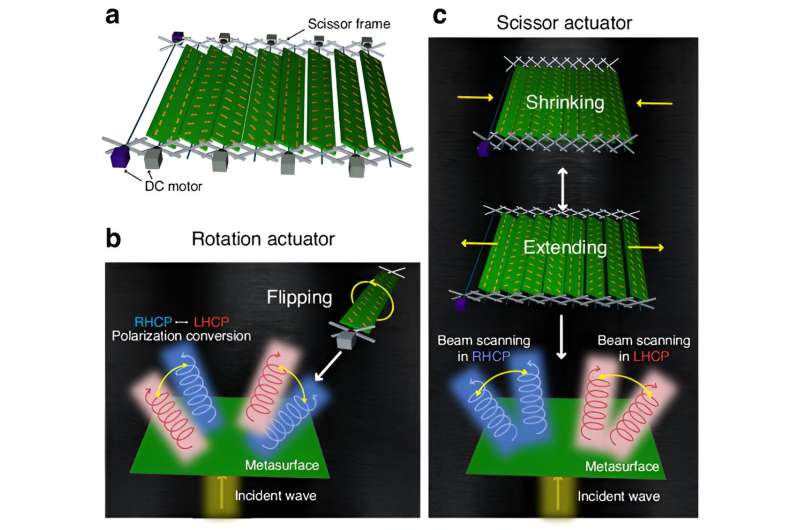
Researchers have unveiled a technology that propels the field of wireless communication forward. This cutting-edge design, termed a reconfigurable transmissive metasurface, utilizes a synergistic blend of scissor and rotation actuators to independently manage beam scanning and polarization conversion. This introduces an innovative approach to boosting signal strength and efficiency within wireless networks.
Reconfigurable metasurfaces are transforming wireless communication by adjusting electromagnetic (EM) wave characteristics such as amplitude, phase, and polarization. These planar arrays enhance wave control, boosting functionalities like polarization conversion and beam scanning. Polarization conversion modifies an EM wave's polarization state, and beam scanning enables directional adjustment of EM waves.
These advancements are key in enhancing image sensing, high-resolution imaging, radar systems, and communication efficiency, particularly in scenarios with multiple polarization states and non-line-of-sight propagation. Traditional metasurfaces, pivotal in wave direction and polarization match, often struggle with independent control, limited scanning ranges, and cost-effectiveness.
Researchers from Chung-Ang University have developed a metasurface that addresses prevailing limitations by offering independent manipulation of beam direction and polarization state. Published in Microsystems & Nanoengineering, this technology advances wireless communication, setting the stage for significant improvements in high-resolution imaging, radar systems, and communication efficiency.
This metasurface integrates two novel actuators: a scissor actuator for adjusting the spacing between unit cells and a rotation actuator for altering their orientation. This dual-action mechanism enables the metasurface to seamlessly switch between different polarization states (right-handed and left-handed circular polarizations) and direct beams across a wide range without the limitations seen in traditional systems.
The innovation lies in its ability to perform these functions independently, a feat that significantly boosts the efficiency and strength of wireless signals. The study confirmed the metasurface's capability through a comprehensive series of analytical, numerical, and experimental tests, showcasing its ability to scan beams over a 28° range at a 10.5 GHz operational frequency.
Sungjoon Lim, the senior researcher, says, "Our work represents a significant step forward in the manipulation of electromagnetic waves. By combining scissor and rotation actuators, we have developed a metasurface that can independently control beam scanning and polarization conversion, a capability that was previously challenging to achieve."
The metasurface technology heralds vast implications for numerous sectors, promising to elevate radar systems, wireless communication, high-resolution imaging, and environmental monitoring to unprecedented levels of efficiency and effectiveness.
More information: Chhunheng Lor et al, Reconfigurable transmissive metasurface with a combination of scissor and rotation actuators for independently controlling beam scanning and polarization conversion, Microsystems & Nanoengineering (2024). DOI: 10.1038/s41378-024-00671-y
Provided by Aerospace Information Research Institute, Chinese Academy of Sciences
Citation: New metasurface innovation unlocks precision control in wireless signals (2024, April 22) retrieved 22 April 2024 from https://techxplore.com/news/2024-04-metasurface-precision-wireless.html
This document is subject to copyright. Apart from any fair dealing for the purpose of private study or research, no part may be reproduced without the written permission. The content is provided for information purposes only.
